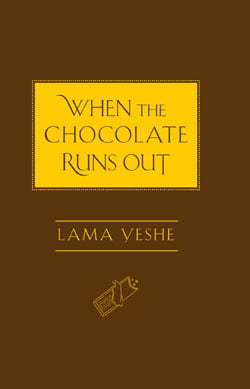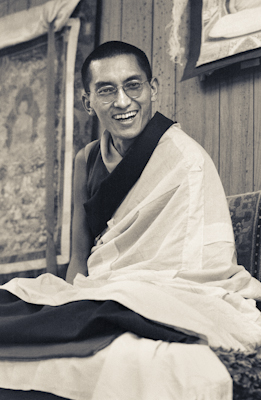Dear LYWA friends and supporters,
Thank you for your kind interest in and support of the Archive. As ever, we would like to reach as many people as possible, so please share this e-letter far and wide and try to get your friends to subscribe to it. Thank you so much!
Lama Zopa Rinpoche Rinpoche recently left hospital and is now staying at a private house in Bendigo and attending rehab as an outpatient. Follow Rinpoche’s recovery adventures on the FPMT website, which is the official source for updates and practices.
Rinpoche recently left hospital and is now staying at a private house in Bendigo and attending rehab as an outpatient. Follow Rinpoche’s recovery adventures on the FPMT website, which is the official source for updates and practices.
Also see the FPMT's latest e-newlsetter for Lama Zopa Rinpoche's own update.
In case you did not see LYWA's last e-letter, which was devoted to this incident, you can see it here. In it we linked to various teachings by Rinpoche on how to understand when our precious gurus manifest illness.
Thank you for all the prayers and practices you all did for Rinpoche’s quick return to his pre-stroke aspect. I’m sure they helped and are helping in Rinpoche’s improving appearance.
When the Chocolate Runs Out In collaboration with LYWA, Wisdom Publications has just brought out a new Lama Yeshe book, When the Chocolate Runs Out, a companion book to Lama Zopa Rinpoche’s How to Be Happy.
In collaboration with LYWA, Wisdom Publications has just brought out a new Lama Yeshe book, When the Chocolate Runs Out, a companion book to Lama Zopa Rinpoche’s How to Be Happy.
This collection of pithy and essential advice has been drawn from many of Lama Yeshe’s previously published teachings, mainly books published by LYWA, and makes a great introduction for people who have not read Lama before and is a source of inspiration for those who have.
If you are an LYWA member you will be receiving this book soon...we have just sent it to you.
Big Love Project
Work continues on what is by far the biggest publishing project in our history, Big Love, the official Lama Yeshe biography. The author, Adele Hulse, spent eighteen years compiling the material and our great editors, Ven Connie Miller and Jon Landaw, have spent more than two years working on it and we still have several more months to go. You can read excerpts on our website of this incredible book.
 In addition, our digital imaging specialist, David Zinn, has been developing the FPMT photo archive over the past several years in preparation for this book. So far we have sorted through more than 30,000 images and this work too will continue for several more months. You can view our progress in our website’s Image Gallery, where so far we’ve posted over 800 of these precious images.
In addition, our digital imaging specialist, David Zinn, has been developing the FPMT photo archive over the past several years in preparation for this book. So far we have sorted through more than 30,000 images and this work too will continue for several more months. You can view our progress in our website’s Image Gallery, where so far we’ve posted over 800 of these precious images.
Naturally, all this costs money, and our initial Big Love fund has now run dry, so we need your help in bringing the work on this amazing project to a close. Our goal is $35,000.
Please consider contributing $5,000, $1,000, $500, $100 or whatever you can to help us bring Lama Yeshe’s amazing story to light. You can make your contribution here: www.LamaYeshe.com/BigLove. Please let me know if you need more information, but please do support this incredible book!
What's New On Our Website
We have just completed posting the recordings of Lama Zopa Rinpoche's lectures from the 33rd Kopan Course in 2000. Listen online to these incredible recordings. In these lectures Rinpoche gives teachings on emptiness, and oral transmissions of the Heart Sutra, Diamond Cutter Sutra and the Medicine Buddha mantra.
We have also posted the lightly edited transcript of these same teachings, and have pulled out a few excerpts as well, including "How to Live with Bodhicitta", "Putting Effort into Dharma Practice" and this month's eletter teaching below, "Compassion is the Essence of Religion".
There were over 20 new advices added to Lama Zopa Rinpoche's Online Advice Book, and you can see a list of all the new advices added in May here. There were many new advices posted in the "Health" section, including advice to a student who has AIDS. There are also many new advices in the "Dharma Organization Work" section, such as advice to those offering FPMT Service. For more advice from Rinpoche on this topic see Rinpoche’s Advice page on the FPMT website.
If you want receive weekly e-mail notices when new teachings and advices are posted to our website, you can always sign up for e-mail alerts. You can choose specific teachers or topics to be alerted about, or be notified about all uodates to our website.
Foreign translations This month we posted a pdf of the Swedish translation of Lama Yeshe's teaching Light of Dharma. It is a lightly edited transcript of Lama's commentary on the three principal paths to enlightenment given in September 1983 in Vaddo, Sweden, and contains some beautiful photos of Lama from the visit.
This month we posted a pdf of the Swedish translation of Lama Yeshe's teaching Light of Dharma. It is a lightly edited transcript of Lama's commentary on the three principal paths to enlightenment given in September 1983 in Vaddo, Sweden, and contains some beautiful photos of Lama from the visit.
We are also happy to announce the publication of Lama Yeshe's Becoming Your Own Therapist and Make Your Mind an Ocean in Czech. See here to download pdf versions of these books, and also find information on how to get a copy of the book.
If you want to access lists of all translations of our books you can chose "Foreign Translations" from the Teachings menu on our website and you'll see all the languages available listed there.
We rejoice in all we are able to accomplish through the kindness and generosity of our supporters. Thank you so much!
Much love,
Nick Ribush
Director
 Kopan No. 33: Compassion is the Essence of Religion
Kopan No. 33: Compassion is the Essence of Religion
Do not engage in any unwholesome action—any action that is harmful to oneself and other sentient beings.
“Engage in the perfect wholesome action, perfect virtue.”
This means action which is beneficial to oneself as well as to other living beings.
“Subdue one’s own mind. This is the teaching of the Buddha.”
Taming the mind or subduing the mind is not only in Buddhism, it should be the essence of all the religions. If this practice is not there, then no matter how much we chant prayers or rituals, if we do not subdue the mind, that brings problems to our life. If we do not subdue the mind it gives problems to ourselves and others—to the world, to other sentient beings.
This applies to any religion. It should be the essence of any religion, otherwise, how can the religion benefit—how it can bring peace and happiness to the individual person’s life as well as to the world? If the essence of religion is not reducing anger, if it’s not subduing the mind, subduing anger, desire and the dissatisfied mind—all these things that make life unhappy—it cannot work. The simple way of expressing this is to say that all these emotional thoughts make our own life and other’s lives unhappy.
By practicing patience, anger is subdued. If we practice compassion, the thought cherishing others, we subdue the ego, the self-centered mind. Only caring for ourselves and cherishing ourselves, only working for ourselves, not benefiting others—is countered by practicing compassion, the good heart. By cherishing others, we subdue the ego, the self-centered mind. By renouncing the dissatisfied mind of desire, we achieve contentment and inner peace. We achieve peace in our heart by practicing renunciation and letting go of desire, the painful mind of grasping. Letting go of this, we achieve contentment, inner peace and satisfaction in our life and in our heart. The essence of religion should be these things. At least, at least, it should be subduing the mind.
The lack of this explains why there are a lot of wars between religions. For hundreds and hundreds of years, for an unbelievable length of time, so many people have been killed and have suffered for that.
Therefore, it is very important to practice compassion, which is the essence of religion. It’s not only in Buddhism—any religion should be like that. We should all practice compassion and kindness towards others. Often His Holiness the Dalai Lama says, ‘My religion is kindness towards others.’ That makes sense: my religion is kindness towards others. That has great meaning. If that is practiced, it is impossible to have all these wars between religions for years and years, where so many hundred thousand, millions of people get killed or suffer. I guess, maybe, they missed out on what the real meaning of religion is. They missed out or didn’t get to practice the real essence of religion—compassion or kindness towards other living beings.
If our mind is devoid of compassion, if our heart is devoid of compassion, inner peace and contentment, then no matter what extensive things or external practices we perform, it is not real religion. It’s not spiritual. Our heart is empty of spiritual practice.
Of course, there is no question that according to the teaching of the Buddha, “practicing the Dharma” means to subdue our mind, to tame the disturbing, obscuring, emotional thoughts that bring so much suffering to ourselves and others from life to life. The disturbing thoughts have been giving suffering to ourselves and others from beginningless time—not only from the time of birth in this life but from beginningless rebirth up to now.
If we continue like that, if we don’t change our mind, we will continue giving harm to ourself and others without end, so, therefore, it is very important. Everybody wants peace and happiness. Everybody wants peace. Everybody wants happiness. Numberless other living beings—insects or human beings, devas, or any other living beings—everyone wants happiness just exactly as we do. Nobody wants suffering and everybody wants peace and happiness. Therefore, it is extremely important that the real essence of any spiritual practice, any real Dharma, is to tame one’s mind. To make the mind soft, not rough, not harmful, not vicious or violent. Not like that. A soft mind, a loving mind, being kind towards others.
Kyabje Lama Zopa Rinpoche explained the essence of spiritual practice at the 33rd Kopan Course held at Kopan Monastery, Nepal, in 2000. This teaching is an edited excerpt from Lecture Four of the course.































